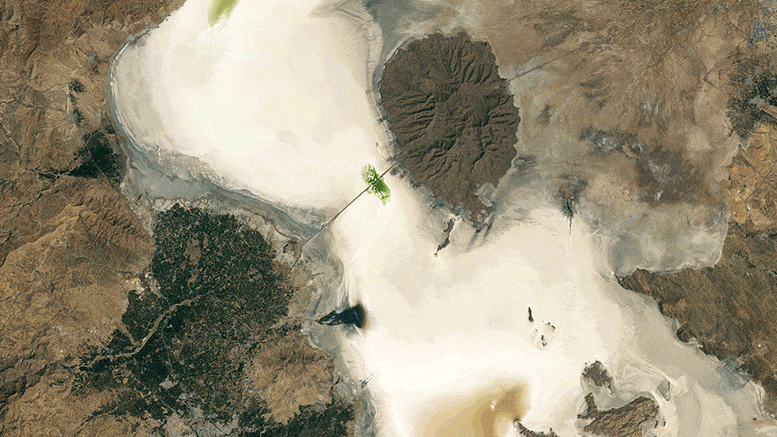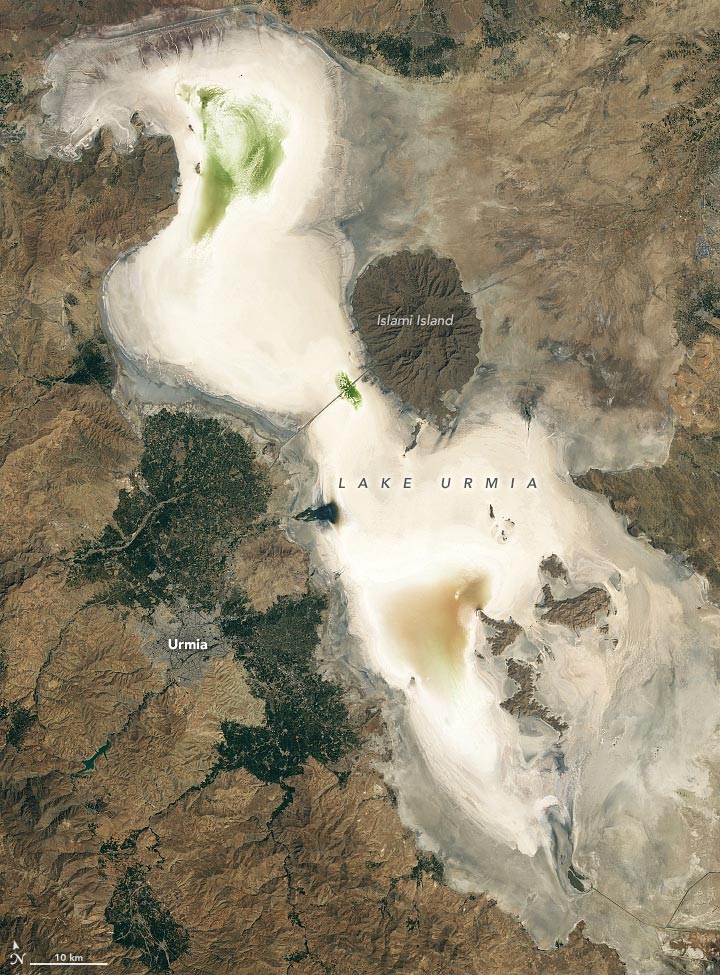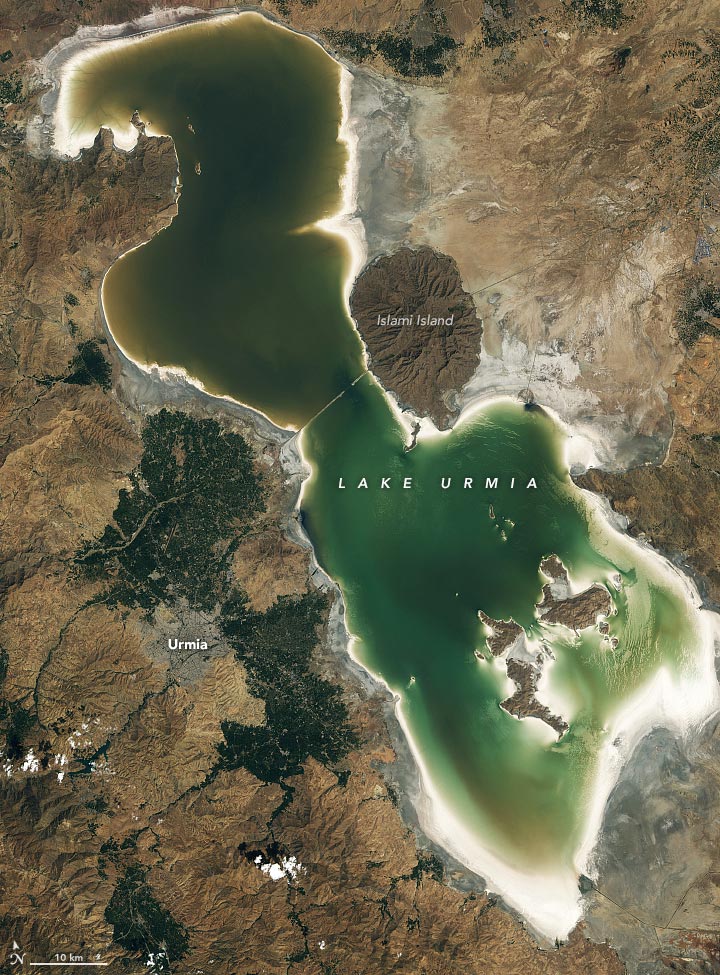
Lake Urmia in northwest Iran, once the Middle East’s largest lake, has mostly turned into a dry salt flat by autumn 2023. While it experienced a resurgence in 2020 due to unusual rainfall, historical trends show it has been drying since 1995, losing nearly 90% of its area.
A few years after a fresh influx of water raised its levels, Lake Urmia has nearly gone dry.
After rapidly growing in volume just a few years earlier, northwest Iran’s Lake Urmia nearly dried out in autumn 2023. The largest lake in the Middle East and one of the largest hypersaline lakes on Earth at its greatest extent, Lake Urmia has for the most part transformed into a vast, dry salt flat.

Satellite image of Lake Urmia captured by the Operational Land Imager-2 on Landsat 9 on September 7, 2023.
On September 7, 2023, Landsat 9’s OLI-2 (Operational Land Imager-2) captured this image (above) of the desiccated lakebed. It stands in contrast to the image from three years earlier (below), acquired by Landsat 8’s OLI (Operational Land Imager) on September 8, 2020, when water filled most of the basin and salt deposits were only visible around the perimeter of the lake. The replenishment followed a period of above-average precipitation that sent a surge of freshwater into the basin, expanding its watery footprint. Drier conditions have since brought levels back down.

Satellite image of Lake Urmia captured by the Operational Land Imager on Landsat 8 on September 6, 2020.
Historical Trends and Causes of Depletion
The longer-term trend for Urmia has been one toward drying. In 1995, Lake Urmia reached a high-water mark; then in the ensuing two decades, the lake level dropped more than 7 meters (23 feet) and lost approximately 90 percent of its area. Consecutive droughts, agricultural water use, and dam construction on rivers feeding the lake have contributed to the decline.
Ecological and Health Implications
A shrinking Lake Urmia has implications for ecological and human health. The lake, its islands, and surrounding wetlands comprise valuable habitat and are recognized as a UNESCO Biosphere Reserve, Ramsar site, and national park. The area provides breeding grounds for waterbirds such as flamingos, white pelicans, and white-headed ducks, as well as a stopover for migratory species. However, with low lake levels, what water remains becomes more saline and taxes the populations of brine shrimp and other food sources for larger animals.
A shrinking lake also increases the likelihood of dust from the exposed lakebed becoming swept up by winds and degrading air quality. Recent studies have linked the low water levels in Lake Urmia with respiratory health impacts among the local population.
Debate on Contributing Factors
The relative effects of climate, water usage, and dams on Lake Urmia’s water level remains a topic of debate. The lake did see some recovery during a 10-year restoration program beginning in 2013. However, the efficacy of that effort has been difficult to parse since strong rains also fell during that period. Some research has concluded that climatic factors were primarily responsible for the recovery.
NASA Earth Observatory images by Lauren Dauphin, using Landsat data from the U.S. Geological Survey.









“Largest lake in the Middle East.” So how big was it? That should have been in the reporting. Compare it to other well known lakes. Give us something to compare it to.
It is with greatest sadness that this has been reported. Unfortunately one of the factors can not be ignored completely is mismanagement of waters in Iran by incompetent government.